A sewing ham, a seemingly whimsical yet indispensable tool in the realm of sewing and tailoring, derives its name from its distinctive ham-like shape.
This dual-sided device, typically crafted from heavy-weight fabric, serves as a secret weapon for those seeking precision and professionalism in garment construction
Used primarily for pressing and shaping curved areas of clothing, such as darts, sleeves, cuffs, collars, and waistlines, a sewing ham excels in achieving a tailored fit and polished finish.
Its curvature allows for targeted pressing on seam allowances while preventing unsightly creases on the fabric’s visible side. Versatile and compatible with different fabric types, a sewing ham is the unsung hero behind elegantly draped and perfectly fitted garments.
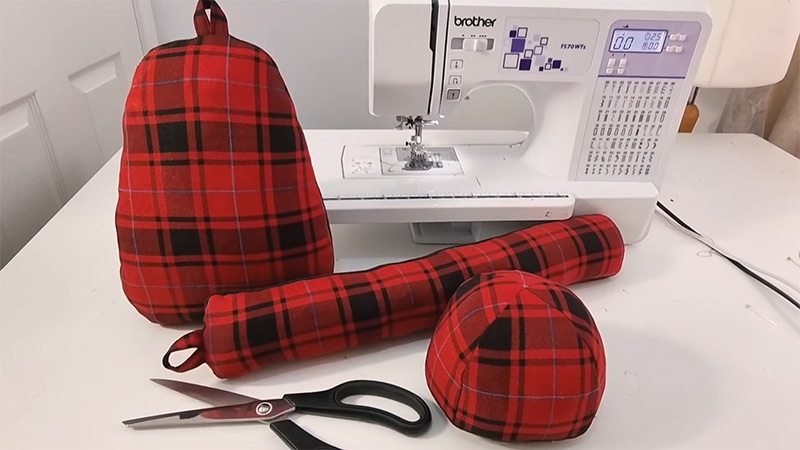
What Is A Sewing Ham?
A sewing ham, or tailor’s ham, is a specialized sewing tool resembling a ham joint in shape. It is crafted from heavy-weight fabric, often dual-sided with cotton and wool, and filled with materials like sawdust or scrap fabric.
This unique tool is used to shape and press curved areas of clothing, such as darts, sleeves, cuffs, collars, and waistlines. Placing the fabric over the curved surface of the ham and applying heat, helps the fabric conform to the body’s contours, ensuring a proper fit.
Sewing hams are essential for achieving professional, well-tailored garments and are often paired with tailor’s sausages and clappers for enhanced results.
Why Is It Called a Sewing Ham?
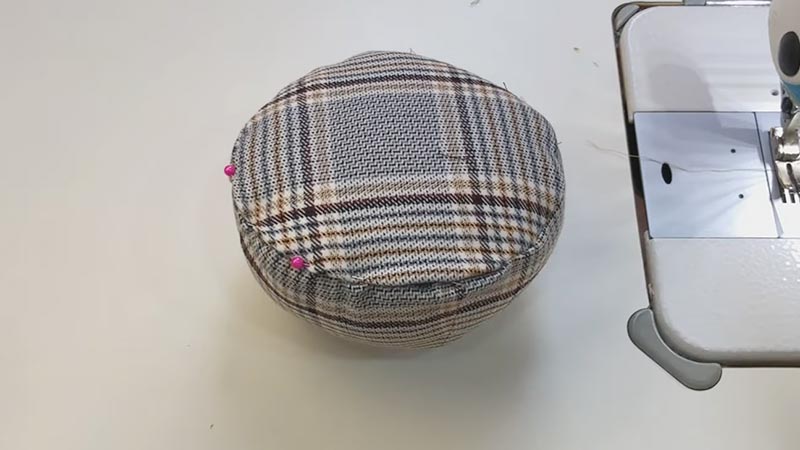
A sewing ham is called so because of its distinctive shape, which resembles a ham joint. Its curved and rounded form is reminiscent of a ham, and this shape serves a specific purpose in sewing.
The curved surface of the sewing ham is ideal for pressing and shaping curved areas of clothing, such as darts, sleeves, and collars. This unique shape allows for more precise and effective pressing, helping garments fit better and achieve a professional finish.
While the name might be somewhat whimsical, it accurately reflects the tool’s design and functionality in the world of sewing and tailoring.
What Is a Sewing Ham Made Of?
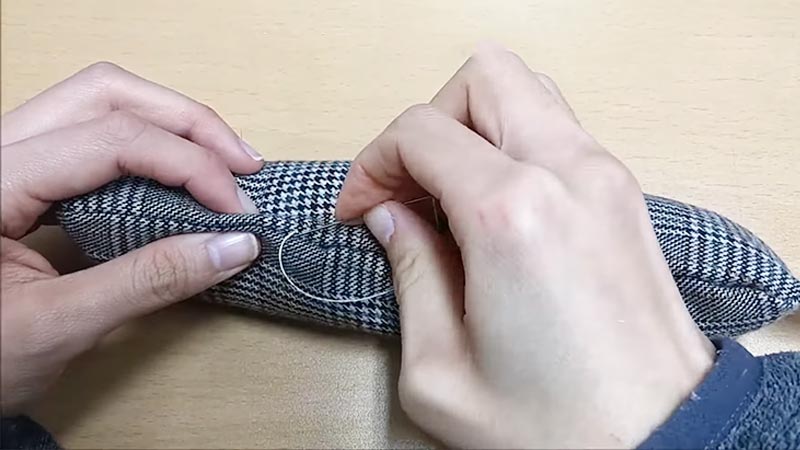
A sewing ham is a remarkable tool in the world of sewing and tailoring, and its composition plays a crucial role in its effectiveness.
This tool is typically made up of two main components:
Heavy-Weight Fabric
The outer shell of a sewing ham is crafted from a sturdy and heavy-weight fabric. This fabric is carefully chosen to withstand the heat and pressure applied during the pressing and shaping process.
It can be composed of materials such as cotton, wool, or a blend of both, depending on the desired characteristics of the sewing ham.
Filling Material
The interior of a sewing ham is filled with a material that provides weight and support. The most commonly used filling materials are sawdust and small fabric scraps.
Sawdust is a favored choice due to its ability to absorb heat and moisture effectively, making it suitable for pressing and shaping fabric. The filling material ensures that the ham maintains its firmness and curvature, which is essential for shaping curved garment elements.
How Is a Sewing Ham Used in Sewing?
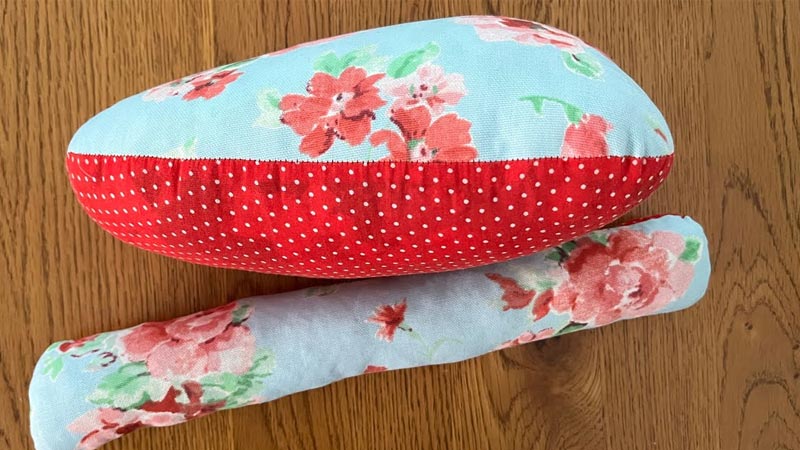
A sewing ham is a versatile and indispensable tool in the world of sewing and tailoring, primarily employed for shaping and pressing curved areas of garments.
Here’s a step-by-step guide on how a sewing ham is effectively used in sewing:
Prepare Your Garment
Before using a sewing ham, ensure that your garment is in a state ready for pressing. This typically involves sewing the seams, darts, or other curved elements you want to shape.
Position the Ham
Place the sewing ham inside the garment, precisely aligning it with the area you wish to press or shape. For instance, if you’re working on a sleeve, insert the ham into the sleeve to fill and support its curved structure.
Fabric Alignment
Ensure that the fabric is smoothly draped over the sewing ham, with the seam allowance or the specific area you intend to shape centered on the ham’s curved surface.
Iron Temperature
Set your iron to the appropriate temperature, taking into account the fabric type and its specific requirements. Delicate fabrics may require lower heat settings, so exercise caution.
Press the Fabric
Gently apply the iron to the fabric while it rests on the sewing ham. The ham’s curved shape enables you to focus the pressure on the seam or the area you are working on. Employ a gentle, up-and-down motion, lifting the iron between presses.
Shape and Mold
The combination of heat and pressure, along with the sewing ham’s contoured surface, facilitates the shaping and molding of the fabric to match the desired contour. This is particularly critical for achieving a well-tailored fit in curved elements of your garment.
Inspect and Repeat
After pressing, inspect the fabric to ensure it has assumed the desired shape. If needed, repeat the pressing process to attain the perfect fit.
Allow to Cool
Allow the fabric to cool and set on the sewing ham for a brief period. This helps the fabric maintain the shape you’ve pressed.
Remove the Ham
Carefully remove the sewing ham from the garment once the fabric has cooled and retained its shape.
Finalize Your Garment
With the fabric now properly shaped and pressed, continue with the remaining construction or finishing steps of your garment. The shaped areas will maintain their contour, resulting in a professionally tailored appearance.
What Are the Benefits of Using a Sewing Ham?
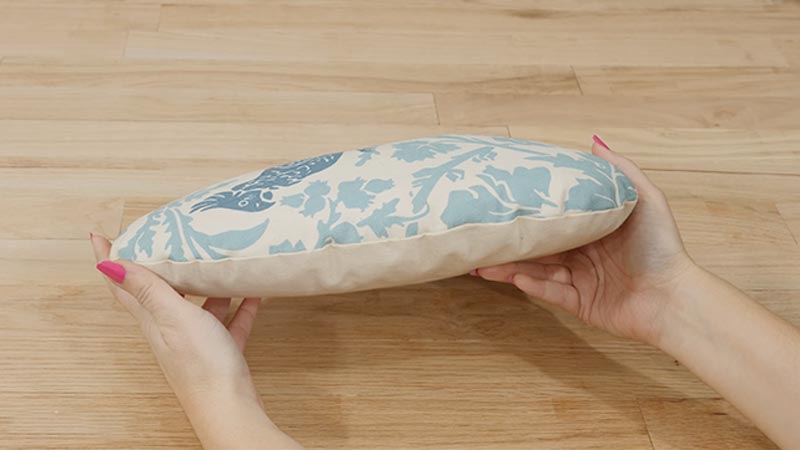
Using a sewing ham in sewing and tailoring projects offers several notable benefits that contribute to achieving a more professional and well-tailored result:
Precise Shaping
Sewing hams are specifically designed to aid in shaping and pressing curved areas of garments. Whether it’s darts, sleeves, cuffs, collars, or waistlines, the ham’s contoured surface allows for precise shaping, resulting in a better fit and a more tailored appearance.
Prevention of Seam Impressions
The curved shape of the ham enables you to focus the pressing on the seam allowances rather than the fabric’s visible side. This helps prevent seam impressions and creases, especially on delicate or textured fabrics, ensuring a smoother and more polished look.
Professional Finish
Sewing hams contribute to achieving a professional and refined finish in garments. They assist the fabric in conforming to the natural curves and contours of the body, improving the overall fit and appearance of the garment.
Versatility
Many sewing hams have dual sides, with one side covered in cotton and the other in wool. This versatility allows you to work with a wide range of fabrics and adjust the heat settings to suit the specific requirements of different materials, making it a versatile tool for various projects.
Tailoring and Drape
Sewing hams are indispensable in tailoring, where shaping and molding the fabric to achieve the desired fit and drape are of utmost importance. They help create garments that not only fit well but also have a tailored and elegant appearance.
Efficiency
Using a sewing ham saves time and effort compared to trying to shape curved areas without the appropriate tool. It ensures consistent and reliable results, making your sewing projects more efficient.
Compatibility with Other Tools
Sewing hams can be used in conjunction with other pressing tools, such as tailor’s sausages and tailor’s clappers, to enhance and refine the results further. This synergy allows for even more professional outcomes in garment construction.
Garment Restoration
Sewing hams are also valuable for reshaping and refreshing vintage or older garments. They can help restore the original form and appearance of these items, extending their lifespan and preserving their historical value.
What Is a Sewing Ham Used For?
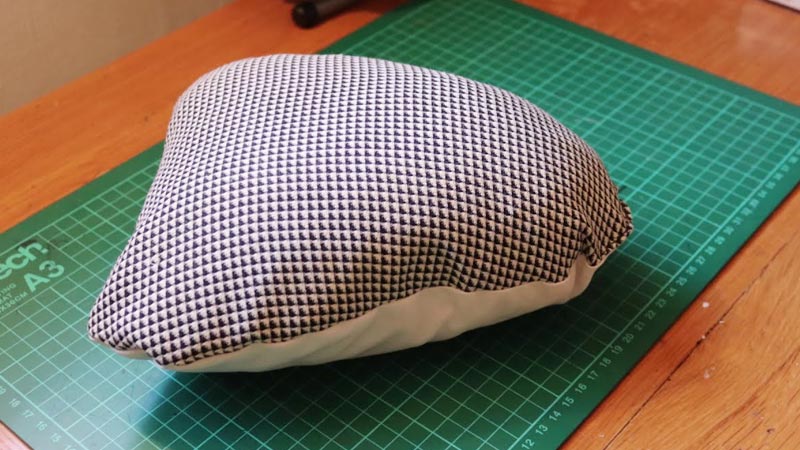
A sewing ham, also known as a tailor’s ham, is a vital tool in the world of sewing and tailoring, serving a specialized purpose in garment construction. It is primarily used for shaping and pressing curved areas of clothing.
Here’s a detailed explanation of what a sewing ham is used for:
Shaping Darts
Darts are tapered seams used to create a three-dimensional shape in a garment, like those found in the bust, waist, or hip areas. A sewing ham helps in pressing and shaping darts to ensure a well-fitted and tailored appearance.
Sleeve Cap Shaping
The cap of a sleeve, where it attaches to the armhole, often requires shaping to reduce puckering and ensure a smooth, comfortable fit. A sewing ham is instrumental in this process.
Collars and Cuffs
Curved edges on collars and cuffs can be challenging to press neatly. A sewing ham helps shape and press these curved elements, resulting in a polished look.
Waistlines
For garments with curved waistlines, such as skirts or dresses, a sewing ham aids in shaping and pressing the waist area to create a flattering and well-fitted silhouette.
Preventing Seam Impressions
The curved surface of a sewing ham allows for concentrated pressing on seam allowances, reducing the risk of visible seam impressions or creases on the right side of the fabric.
Tailoring
Sewing hams are indispensable in the art of tailoring. They assist in shaping and molding fabric, ensuring a well-fitted and elegantly draped appearance. This is especially important when working with high-quality fabrics that respond well to pressing and shaping.
FAQs
Can I make my own sewing ham at home?
Yes, you can create a DIY sewing ham. To do so, you’ll need to sew a ham-shaped pattern using heavy fabric, fill it with an appropriate material like sawdust or fabric scraps, and securely close it. Many crafters and sewers make their sewing hams to fit their specific needs.
Do sewing hams require any special care or maintenance?
Sewing hams don’t require extensive maintenance. However, it’s a good practice to keep them clean and free of excess lint to maintain their effectiveness. The fabric covering may need occasional spot cleaning, and if it becomes overly soiled, it can be replaced.
Are sewing hams suitable for both hand-sewing and machine sewing projects?
Yes, sewing hams are versatile tools suitable for both hand-sewing and machine sewing projects. They can be used in various sewing techniques to shape and press curved areas in garments.
Can sewing hams be used for quilting or crafting projects, or are they primarily for clothing construction?
While sewing hams are commonly used in clothing construction, they can also be helpful in quilting and certain crafting projects that involve curved seams. Their shaping and pressing capabilities can benefit these projects as well.
What size of sewing ham should I choose for my projects?
The size of the sewing ham you select depends on the specific projects you work on and your personal preference. Smaller hams are ideal for intricate work, while larger ones are suitable for more substantial garments and projects.
To Recap
The sewing ham, with its quirky name and distinctive shape, plays an essential role in the art of sewing and tailoring. Beyond its whimsical appearance, this tool is a workhorse for achieving precise and professional results.
Its ability to shape and press curved areas of clothing, preventing seam impressions, and ensuring a tailored fit is invaluable.
With dual-sided versatility, it accommodates various fabric types and temperature settings, making it a versatile companion for sewers and tailors.
The sewing ham, often accompanied by other pressing tools, is the unsung hero behind well-fitted and elegantly finished garments, silently contributing to the world of fashion and textile crafts.
Leave a Reply